How to make giant mirrors for telescopes
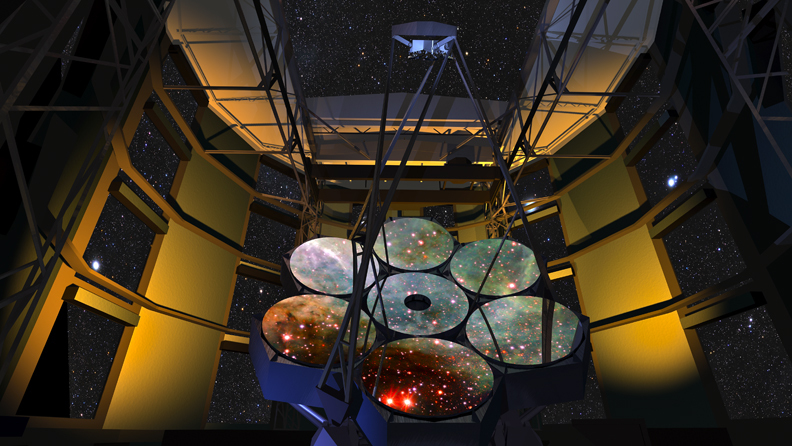
Desert Atacama in Chile - a heavenly place for astronomers. The unique cleanliness of the air, favorable atmospheric conditions throughout the year and the extremely low level of light pollution make this inhospitable region an ideal place for the construction of giant telescopes. For example, the E-ELT telescope , for which a construction site is already being prepared. However, this is not the only large-scale project of this kind. Since 2005, work has been underway to create another impressive astronomical instrument, the Giant Magellan Telescope (GMT). So it will look like after completion of construction in 2020:
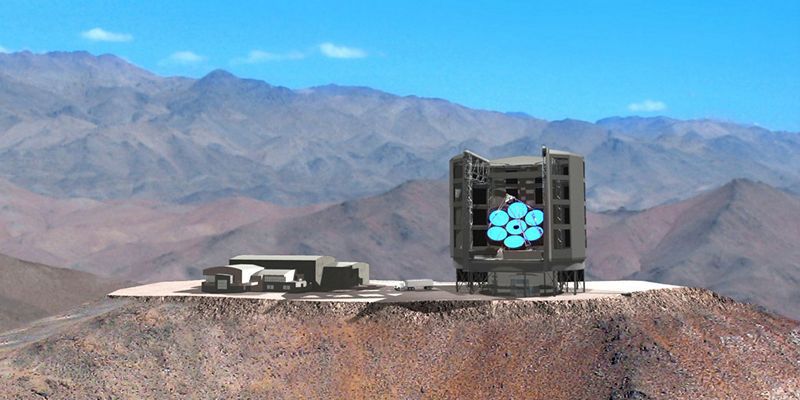
')
At the heart of its optical system is the reflecting surface of 7 huge round mirrors. Each with a diameter of 8.4 m and a weight of 20 tons. In itself, the manufacture of such mirrors, and even with the required accuracy, is a true engineering masterpiece. How are such products created? About this - under the cut.
To date, two mirrors have been made, the third is cast and gradually cooled, the fourth is scheduled for casting at the end of this year. The production process was developed by the Laboratory of Mirrors at the Steward Observatory of the University of Arizona (University of Arizona's Steward Observatory Mirror Lab).
Each mirror is made up of a large number of hexagonal segments, which made it possible to reduce the mass of the product 5 times compared with a solid-cast mirror of the same size. High-quality borosilicate glass blanks are made in Japan. The thickness of the segments does not exceed 28 mm, which positively affects the operating conditions - such a mirror will quickly take on the ambient temperature, which will prevent the occurrence of air oscillations at the surface and distortion of the image.
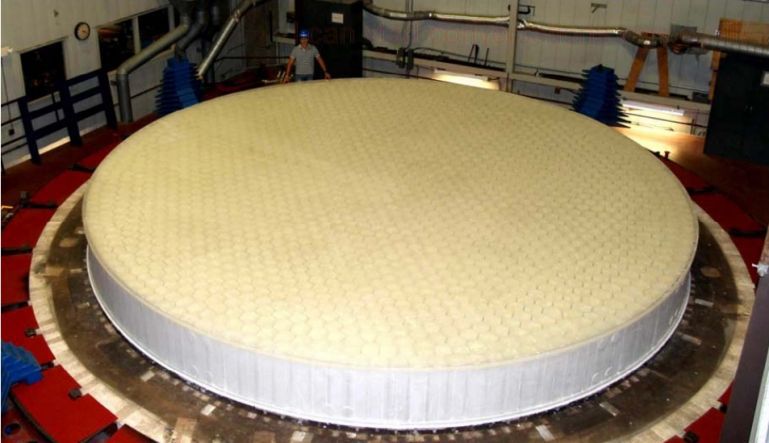
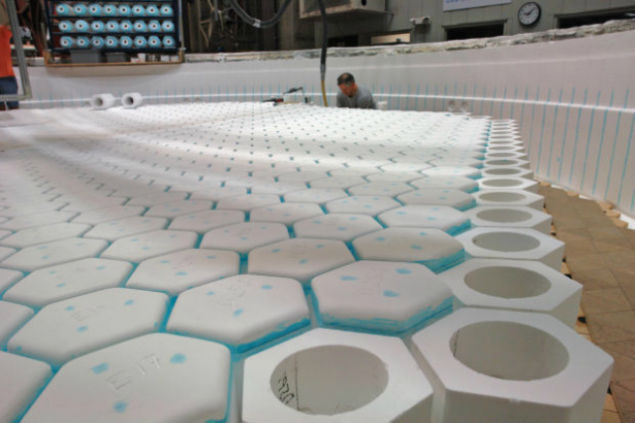
Substrates for mirror segments.
Also, the lightness of the construction of the mirrors themselves will allow to assemble a reflecting surface with a diameter of 25 meters from only 7 primary and 7 secondary mirrors. This at times facilitates the management and adjustment of the telescope. Compare this with the 798 segments in the E-ELT project.
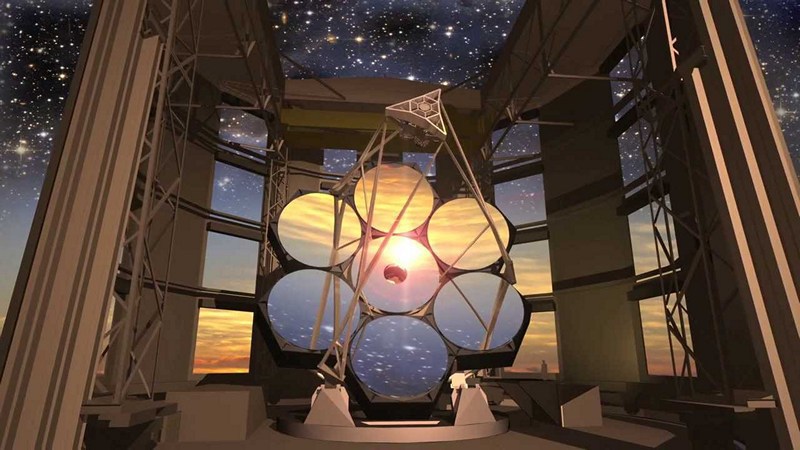
After laying the glass blanks on the substrate (1681 pcs), on top of the entire area of the future mirror is covered with a huge rotary kiln. The temperature reaches 1178 degrees Celsius, the speed of rotation of the furnace - 5 revolutions per minute. As a result, the segments fuse and form a single glass array with a parabolic shape of the surface. The rotation of the furnace due to the centrifugal force allows to form a parabolic surface roughly.

After this begins a long process of controlled uniform cooling, in the same rotary kiln. It takes three months to prevent cracking due to too rapid cooling. Upon completion of cooling, the future mirror is carefully removed from the heat-resistant substrate and transferred to the polishing stand.
Then begins an even longer and painstaking process of polishing the mirror. Unlike spherical mirrors whose surface curvature is constant, polishing a giant parabolic mirror of the highest precision is a very difficult task. In the case of mirrors for HMT, the deviation from the spherical shape was 14 mm.
In general, parabolic lines and surfaces are, so to speak, unnatural. Almost all of the available and created tools are somehow connected with circles and spheres, so scientists and technologists had to break their heads over the polishing of the mirror.
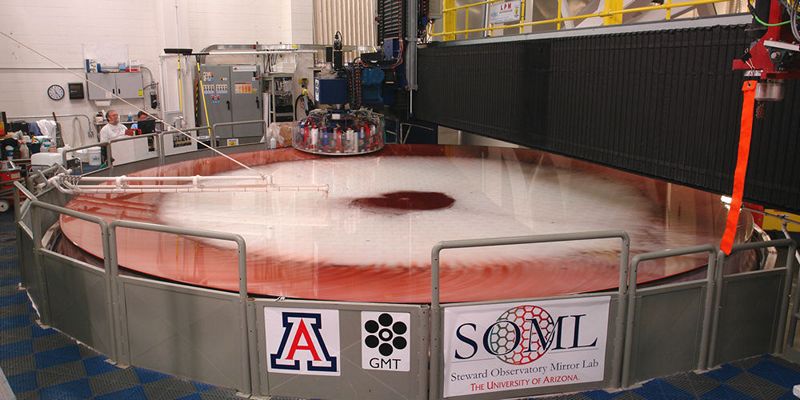
One of the main tools is a rotating disk with a diameter of about 1 m, with dispensers of polishing agents. The disk can move along the guide rail, while the mirror itself rotates around an axis on a polishing stand.
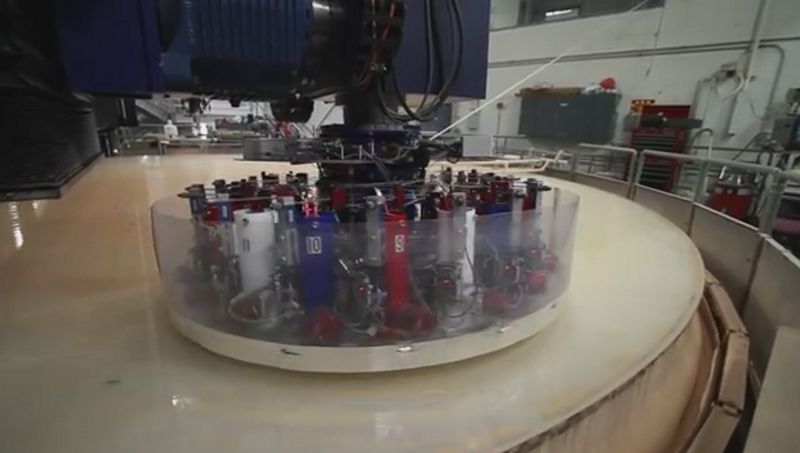
This is a diamond grinding tool for basic surface treatment, designed to align most of the surface defects of the glass and give a saddle shape. The fact is that during the rotation, liquid glass took the form of a symmetrical parabola, which is the closest approximation. And to obtain a paracholic saddle surface, computer-controlled grinding is performed, during which 6–8 mm of glass is removed. The accuracy of surface treatment at this stage reaches 100 microns.
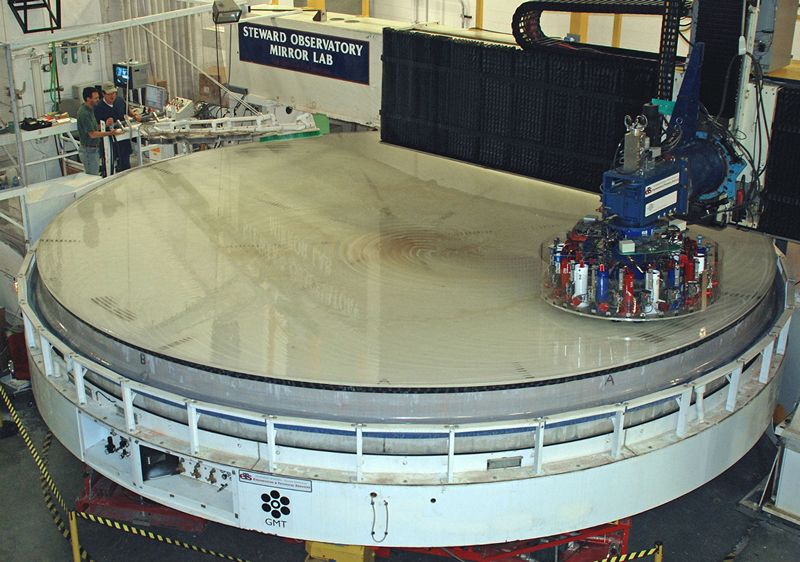
Next begins polishing. After each polishing cycle using an interferometer , the surface of the mirror is measured. The laser beam scans the entire area of the mirror, and various deviations of the reflected beam on the bumps and troughs are recorded and a map of defects is drawn up. The resolution of the interferometer is about 5 nanometers.
Based on the defect map created, the computer manages the tools during the subsequent polishing cycle, spending more time or applying more pressure when processing specific areas. For spot correction of detectable single defects, polishing wheels with a diameter of 10 to 35 cm with sufficiently flexible soles that repeat the curvature of the mirror surface were also used.
For the tasks that the telescope will perform, surface defects of up to 25 nanometers are allowed. And to achieve this is very difficult. Polishing the first mirror in the end took about a year.
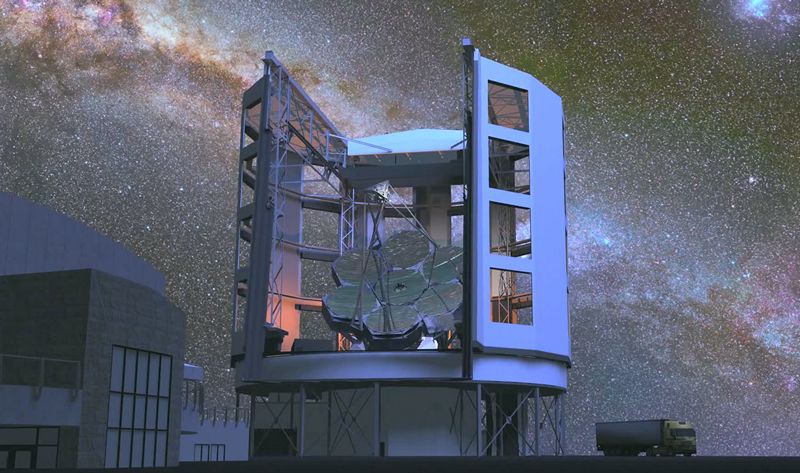
Source: https://habr.com/ru/post/236147/
All Articles